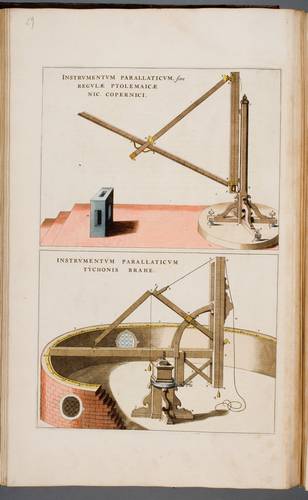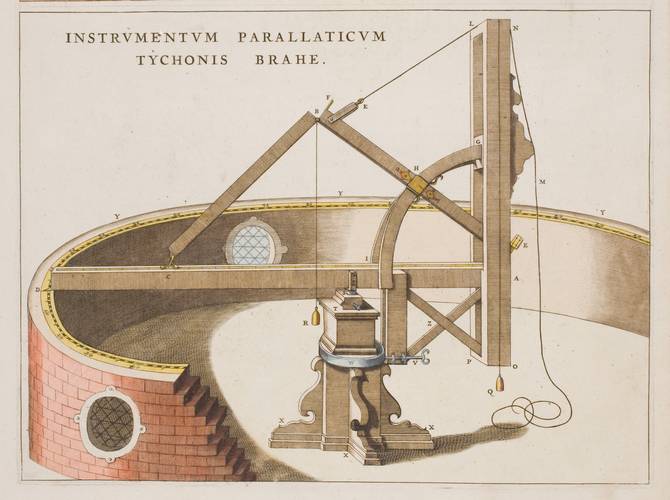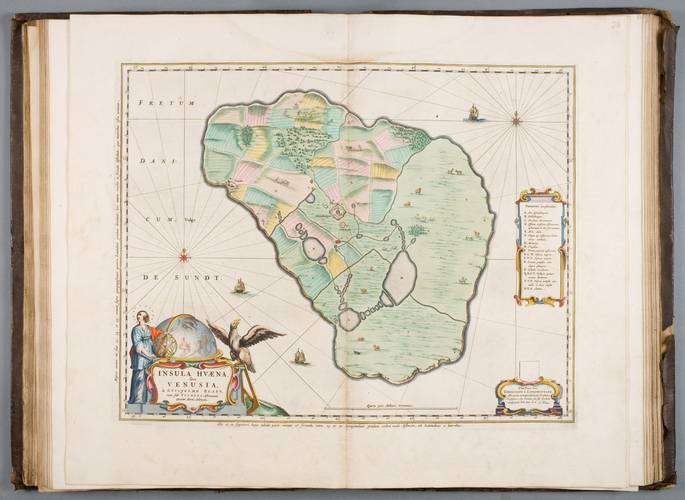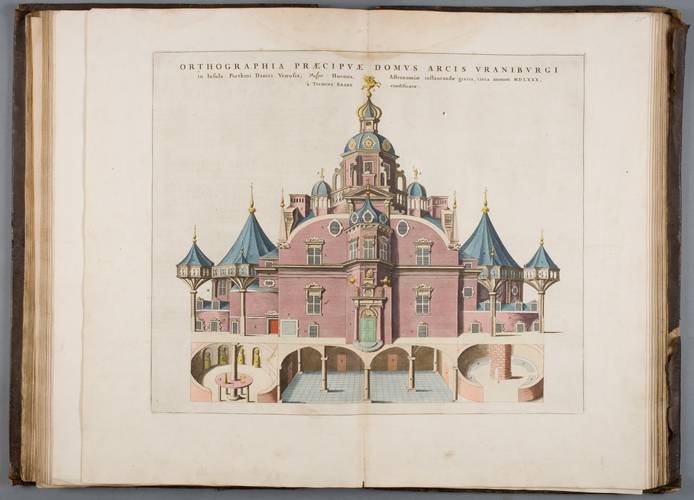Blaeu, J. Geographia quae est Cosmographiae Blavianae pars prima... Amsterdam, 1665.
Well known publishers of atlases Willem Janszoon Blaeu (1571–1638) and his son Joannes Blaeu‘s (after 1597–1673) atlas Geography, which is the first part of Blaeu Cosmography. The atlas contains many astronomical measurement devices constructed by Danish nobleman, astronomer and alchemist Tycho Brahe (Dan. Tyge Ottesen Brahe, 1546–1601) to measure the position of celestial bodies with a precision of one angular minute, plans of observatory and illustrations of instruments. T. Brahe was considered as one of the best known XVI c. astronomers who could establish precisely the position of planets prior to discovery of the telescope and whose calculations were used as a basis for law formulation by German mathematician Johann Kepler (1571–1630)






